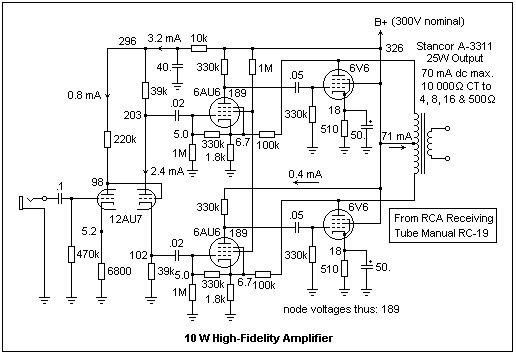I've found a very cheap Marshall 9200 that I would like to convert to a PA for my Klipsch.
The idea came looking at its schematic:
http://drtube.com/schematics/marshall/9100-61-02.pdf
http://drtube.com/schematics/marshall/9100-60-02.pdf
Where the PI has that CCS to get better balance. That's something that can be usually found on hi-fi amps more than on guitar or bass amps.
On top of that there's this reading related to a strong IMD improvement:
http://www.diyaudio.com/forums/tubes-va ... ey-46.html
http://www.southampton.ac.uk/~apm3/diya ... matic1.gif
By now the idea is to:Have a look at what Allen Wright did on this amp: notice that the 0V side of the cathode bypass capacitors do not go directly to 0V. The 2 0V ends of the capacitors are connected together and then have a 68 Ohm resistor to 0V. You can try this on a "Baby Huey". The fact that we use current sources rather than fixed resistors for the cathode biasing will not make any difference to this scheme.
This is a 3rd harmonic distortion suppression scheme and it is worth trying on a "Baby Huey". Try resistor values of between 33 ohms and about 150 ohms (use 2 watt resistors) to see what sounds best. You are listening for a smoother, less "Edgy" sound, particularly at higher frequencies. And of-course, let us know if you think it makes any difference, and if so, what resistor value sounds best to you.
Remove C5 and C7 (presence caps).
Increase the coupling caps to 100n.
Switch the PA to normal mode (feedback is just 100k//330k).
Then see how it sounds.
Next steps will be to remove V1 and V3 and work on it more in depth, also removing the fan and substituing the MPSA43.
Do you guys have other suggestions?
